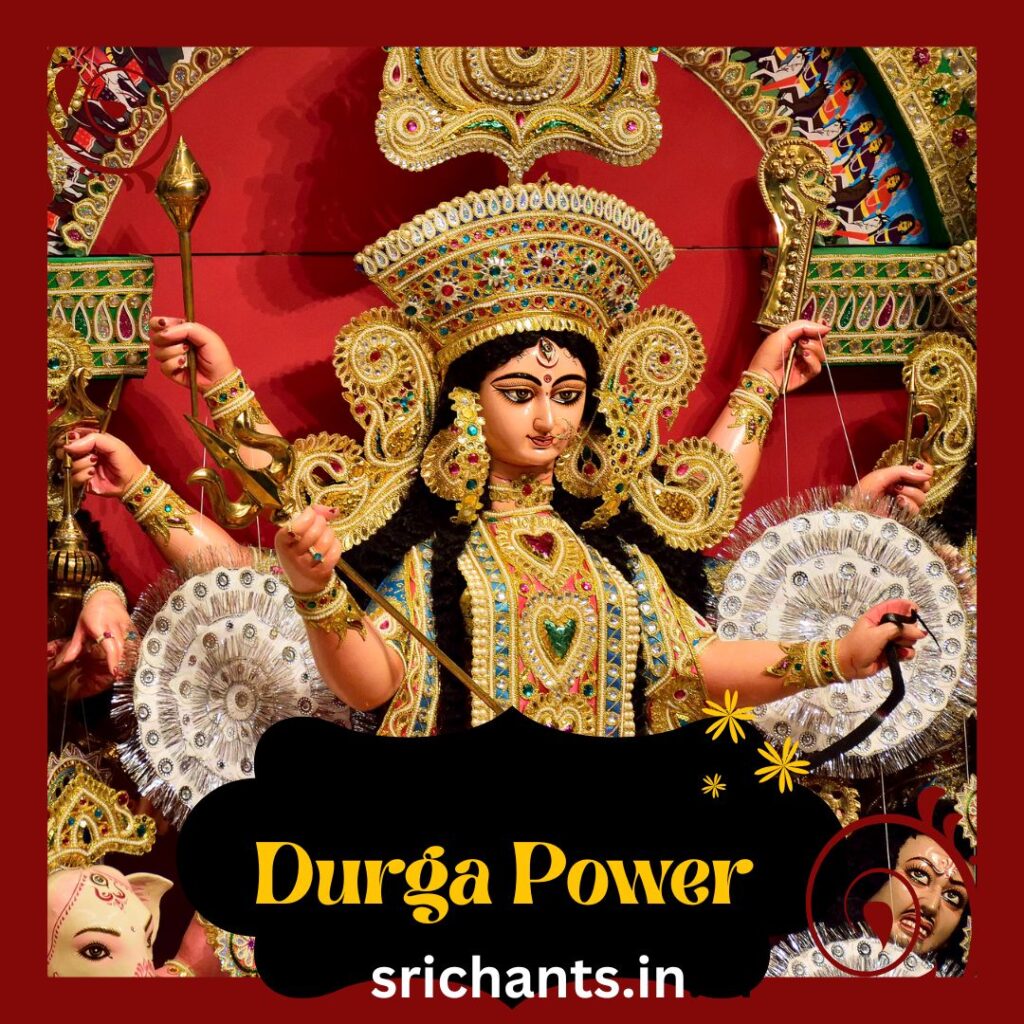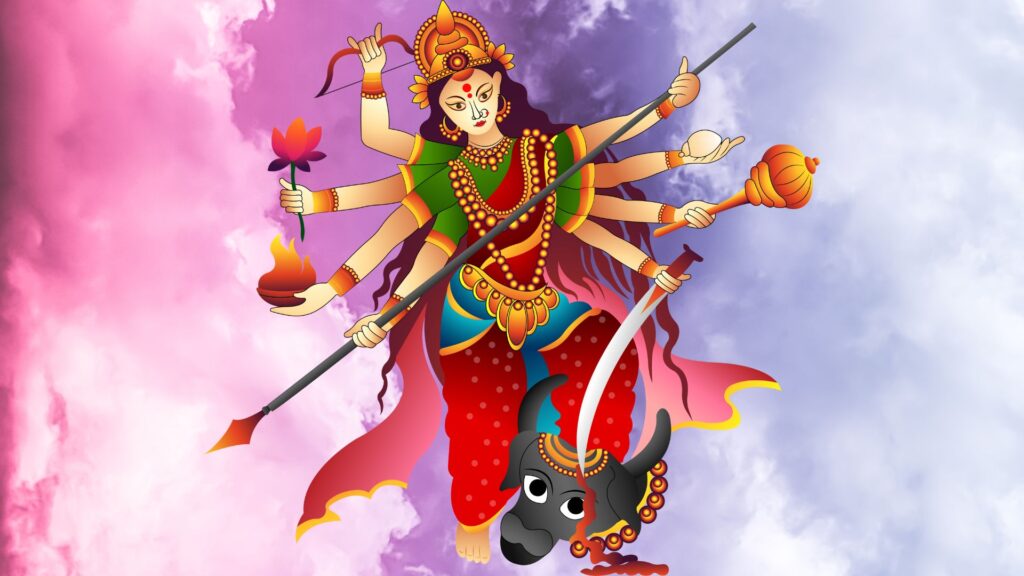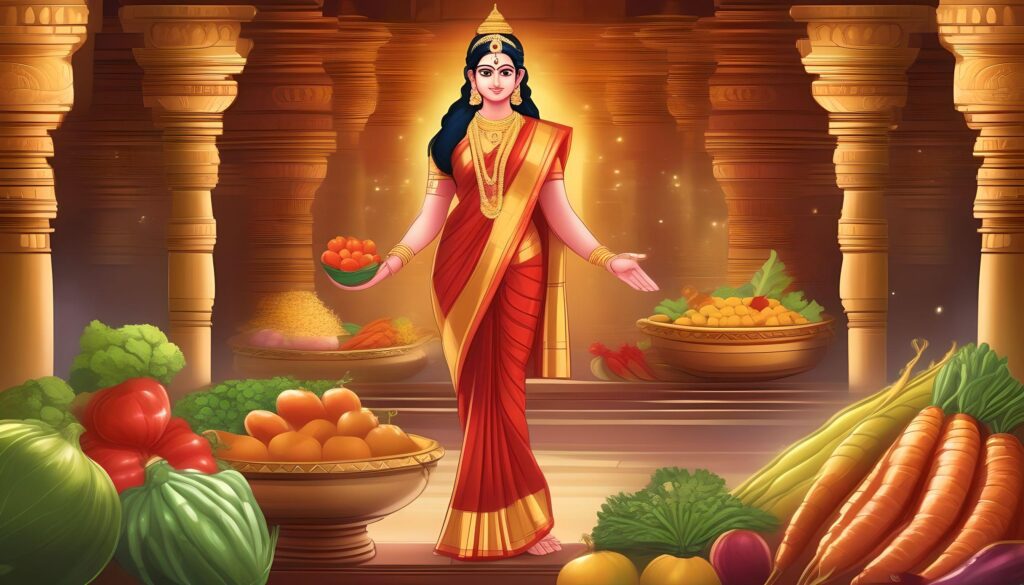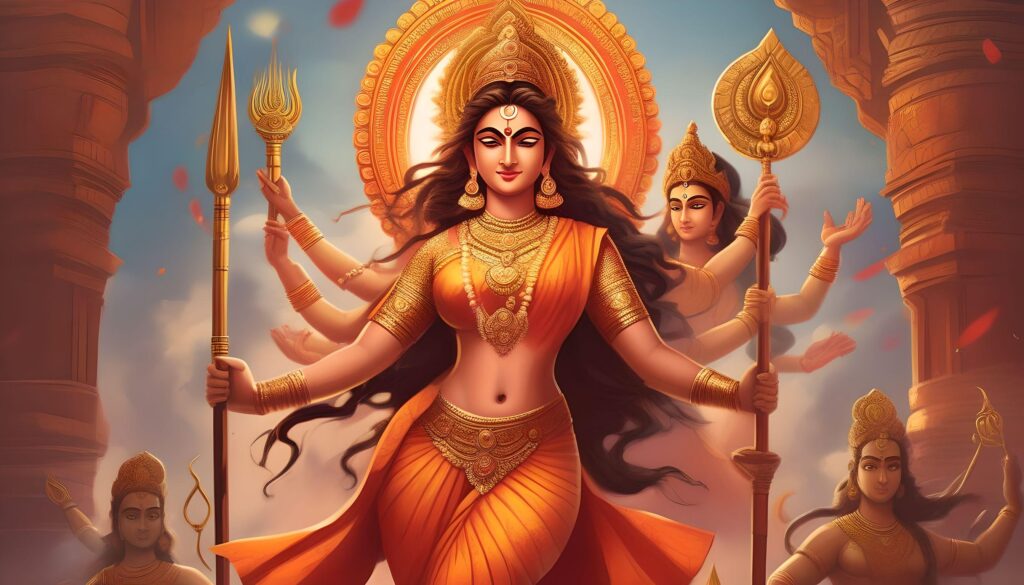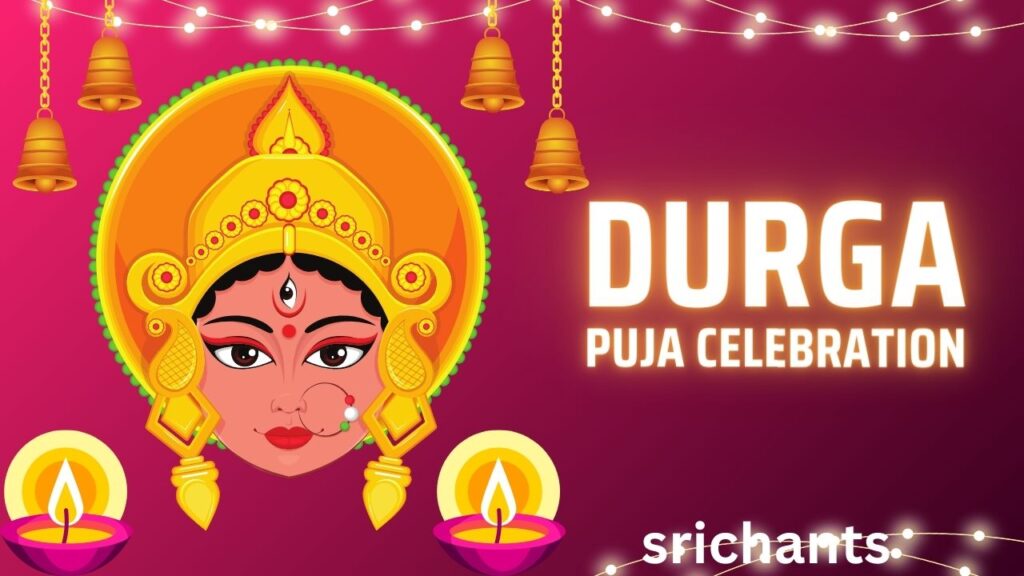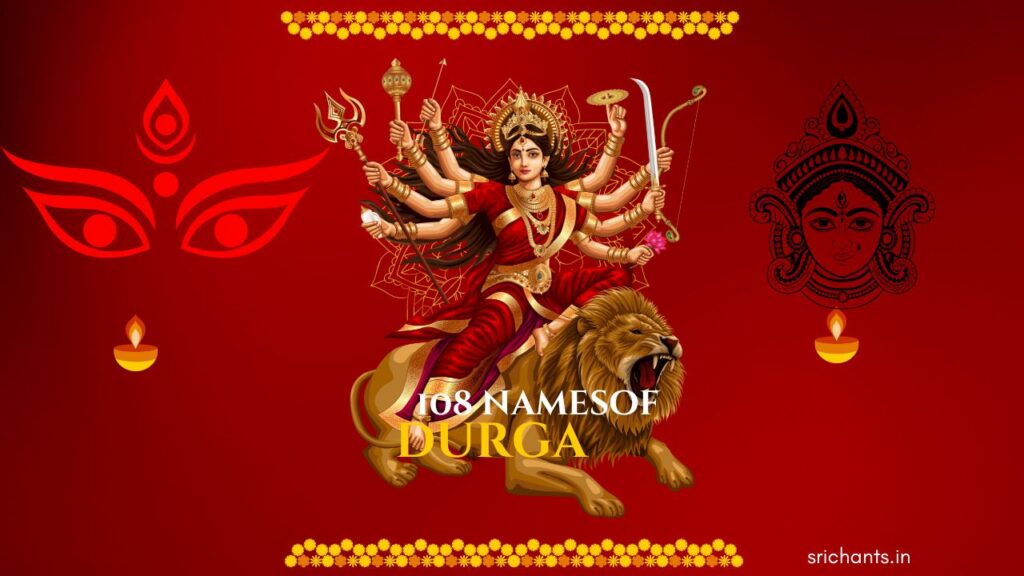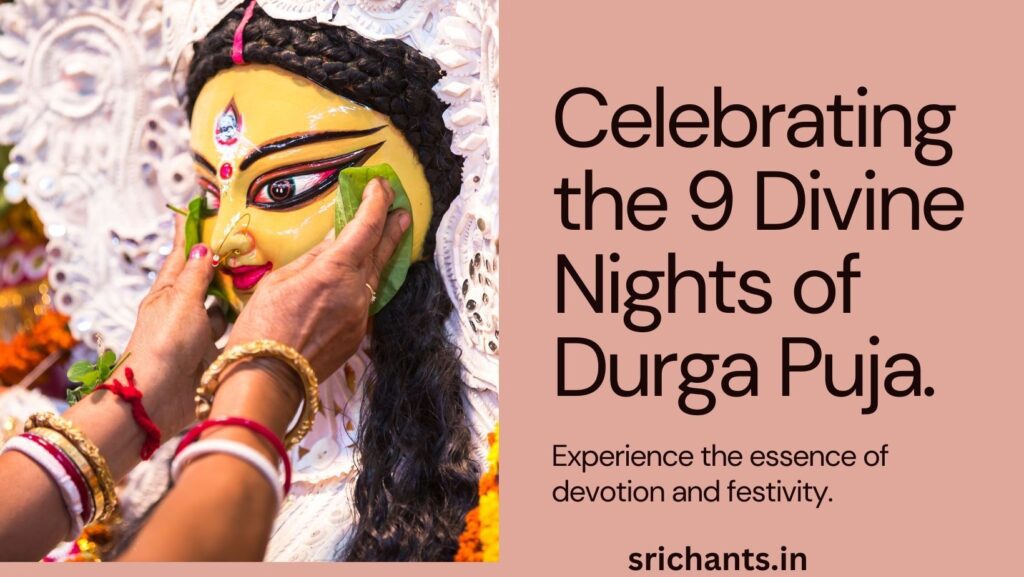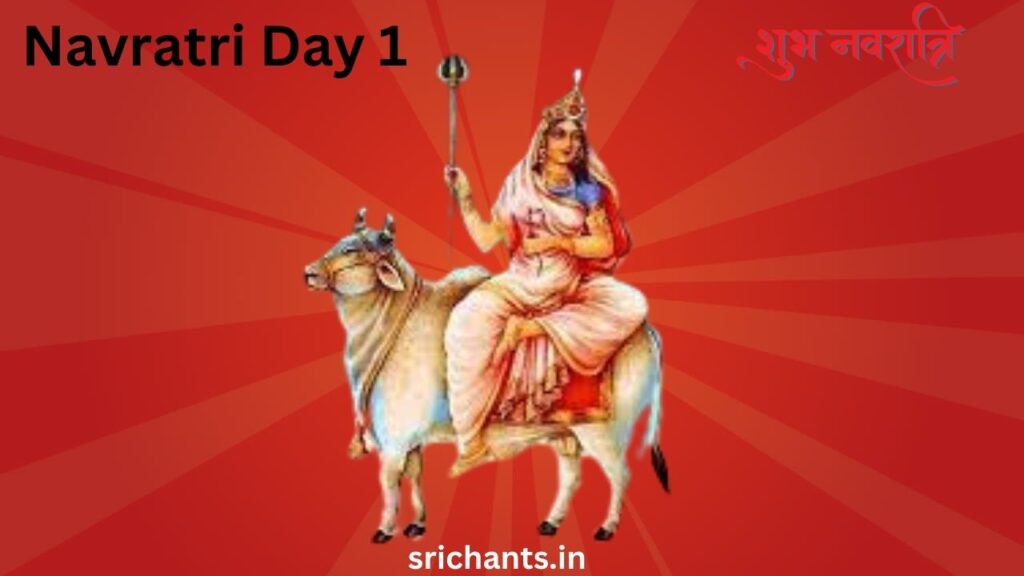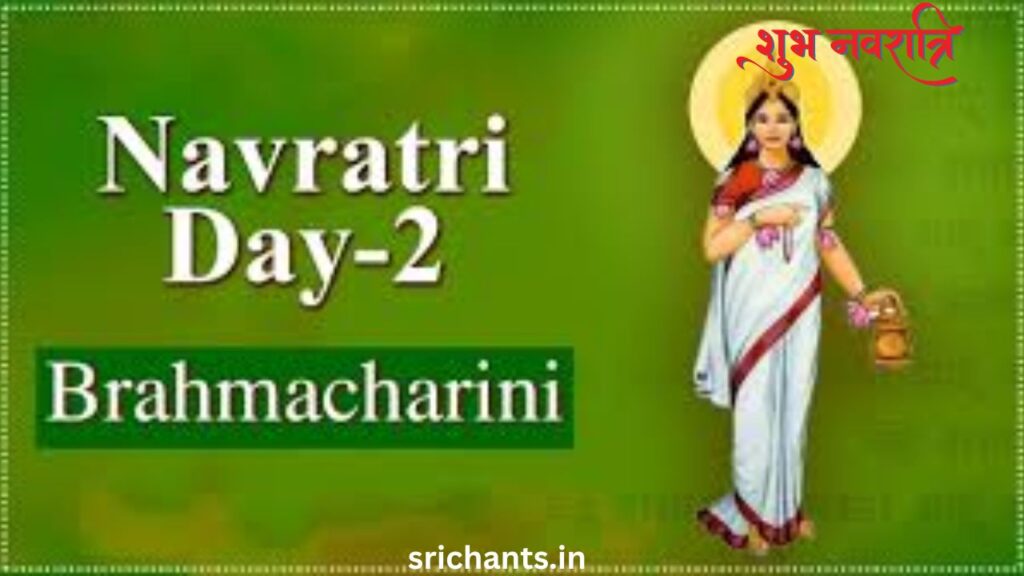Durga Power: Exploring the Symbolism of Her Third Eye
Introduction
In the Hindu religion, Maa Durga, the Supreme shakti, is revered and worshipped with the uttermost devotion. She embodies both protective and nurturing qualities, exhibiting a multi-dimensional demeanor as a divine deity. She occupies a significant position in the souls of her devotees as the Goddess of Strength. Devotees commemorate and revere the nine avatars of Maa Durga during the auspicious occasion of Navratri. Although the saga of Maa Durga is well-known to many, there are some lesser-known and intriguing facts about her, particularly in relation to the symbolism of her third eye.
The Story of Maa Durga
The story of this powerful deity should be briefly reviewed before we delve into the symbolism of Maa Durga’s third eye. Mahishasur, a demon and cousin of the gods, was granted a boon that rendered him impervious to any masculine form, as per Hindu mythology. Mahishasur unleashed terror upon the universe, fueled by his newfound power. Maa Durga was created by the divine trinity of Brahma, Vishnu, and Shiva in response to this severe peril.
Maa Durga, who was seated on a lion, descended from the heavens to purge the Earth of the infamous demon. Maa Durga emerged victorious on the ninth day after a fierce struggle with Mahishasur. This triumph is commemorated during the grand festival of Durga Puja, during which Bengali Hindus convene to venerate the idols that depict this iconic scene.
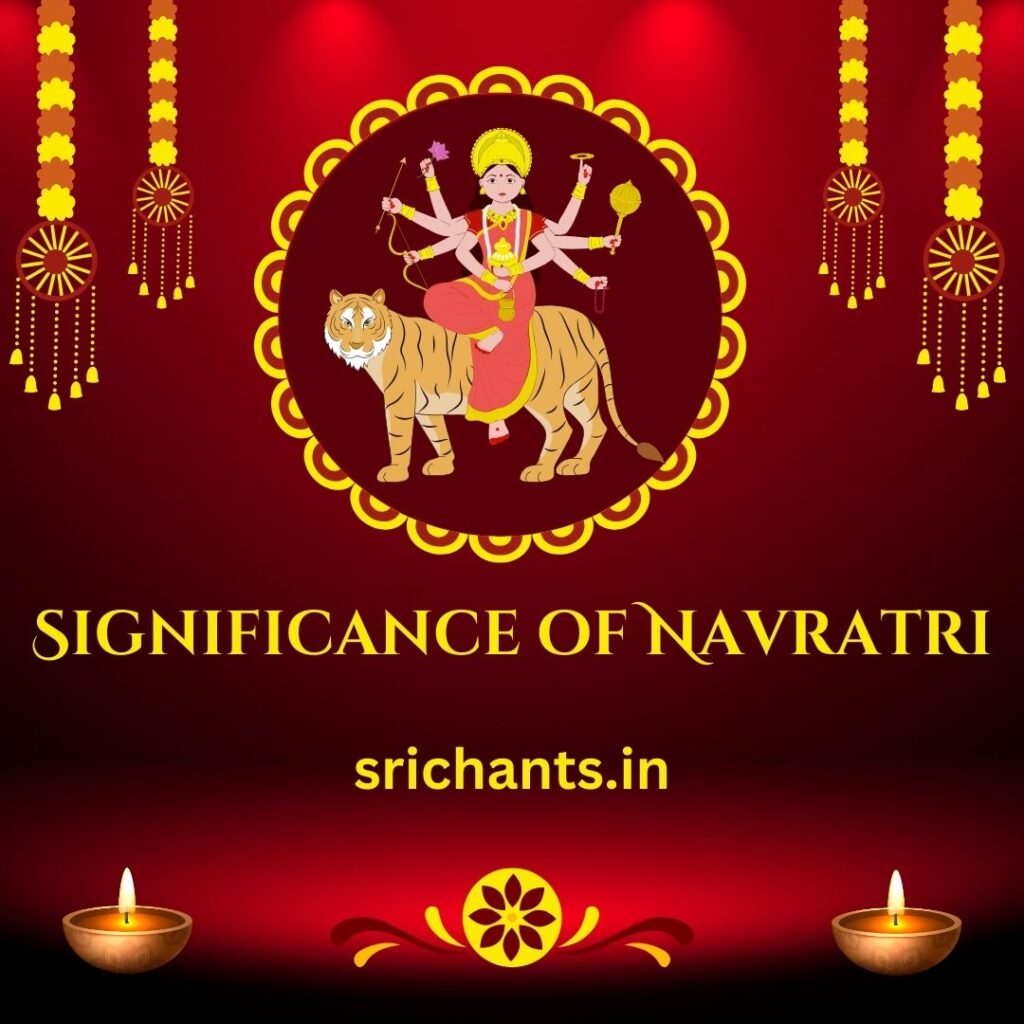
The Symbolism of Maa Durga’s Third Eye
Maa Durga’s three eyes are one of the most captivating features, as they are imbued with profound symbolism. Each eye symbolizes a distinct aspect of cosmic power and divinity. The left eye is believed to represent desire, the right eye to represent action, and the central eye to represent knowledge. Collectively, these three eyes represent the divine attributes of the moon (chandra), the sun (surya), and fire (agni).
The significance of sustaining balanced aspirations in life is underscored by the left eye’s association with desire. It serves as a reminder that desires can result in development and fulfillment when they are positively directed. The right eye’s representation of action underscores the importance of virtuous deeds and the ability of one’s actions to influence their destiny. Finally, the central eye, which represents knowledge, underscores the significance of wisdom and comprehension in our pursuit of self-realization.
Maa Durga, the Expression of Shiva
Maa Durga is frequently considered to be the other half of Lord Shiva. The expression is embodied by Durga, while Shiva represents the form. Durga’s dynamic and compassionate demeanor serves as a counterpoint to Shiva’s stillness and detachment. Collectively, they represent the harmonious equilibrium of grace and force that is the result of the union of masculine and feminine energies.
The Lion and Maa Durga’s Ultimate Power
Maa Durga is depicted as mounting a lion in numerous representations. The lion is a symbol of authority, recognized for its ferocity and strength. Maa Durga affirms her ultimate power as the embodiment of Shakti, the divine feminine energy, by sitting atop the lion. This image symbolizes her capacity to surmount challenges and safeguard her followers from all forms of malevolence.
Triyambake: Maa Durga’s Three Eyes
Maa Durga is frequently referred to as Triyambake, which translates to the deity with three eyes. Each of her three eyes is important and symbolizes distinct cosmic energies. Agni, the deity of fire, is symbolized by the first eye, which represents transformation and destruction. Surya, the sun deity, is symbolized by the second eye, which represents energy and illumination. Finally, the third eye is associated with Chandra, the moon deity, who embodies tranquility and serenity. The divine trinity of cosmic forces that regulate the universe is symbolized by these three eyes in conjunction.
Maa Durga, the Invincible Goddess
The term “Durga” is itself translated as “invincible” in Sanskrit. The goddess’s supreme power and capacity to triumph over any adversary are flawlessly captured by this name. Maa Durga is frequently depicted as a formidable warrior, equipped with a variety of weapons, who is prepared to slay the demons and safeguard her followers. She is the embodiment of fortitude and strength, motivating her followers to confront obstacles with courage and resolve.
Mahishasura Mardini: The Slayer of the Buffalo Demon
Her victory over the demon Mahishasur earned her the title “Mahishasura Mardini” or “the Slayer of the Buffalo Demon.” Mahishasur, who possessed the ability to assume various forms, represented a substantial menace to both the gods and the world. Nevertheless, the demon was defeated by Maa Durga’s unwavering fortitude and divine intervention, thereby restoring peace and harmony. This victory serves as a reminder that virtue will always triumph over evil.
Conclusion
The symbolism of Maa Durga’s third eye is a profound representation of her cosmic power and divine qualities. Desire, action, and knowledge are all encompassed by her three eyes, which direct devotees toward wisdom, virtuous deeds, and balanced aspirations. Maa Durga’s strength and grace are further emphasized by her invincible nature, her lion mount, and her association with Lord Shiva. As we commemorate the Durga Puja festival, let us contemplate the importance of Maa Durga’s third eye and draw inspiration from her divine qualities in our personal lives.
#durga #power #thirdeue #eye #third
